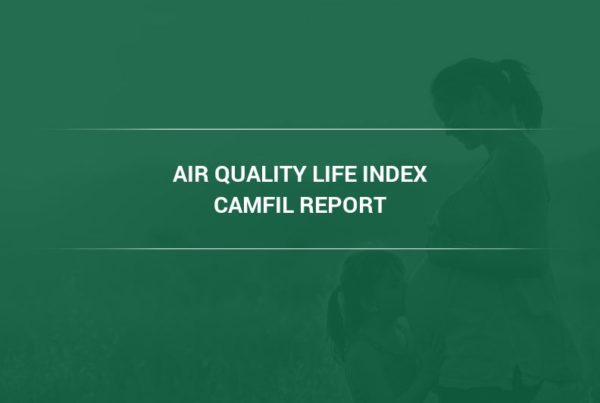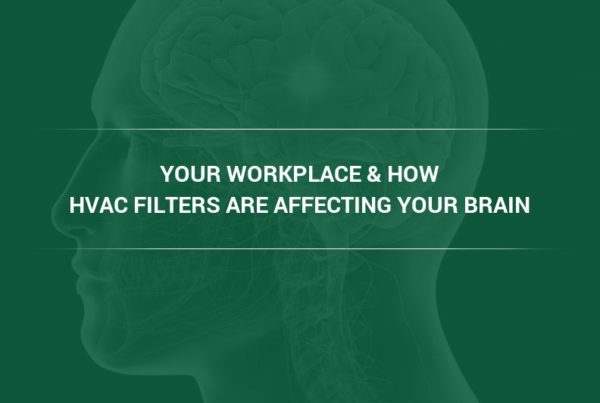Over the years, modern-day grocery stores have evolved far beyond just selling produce and canned goods. Today, you can expect a grocery store to function as part community center, part big-box retailer, part food processor, part restaurant, and more. This evolution adds an ever-increasing strain on the HVAC system to maintain acceptable ventilation and clean air. If there’s one thing that’s going to survive long after the pandemic is over, it will be the public’s demand for safe environments within retail spaces.
In a new video, air filtration expert and Food and Beverage Segment Manager at Camfil USA Patrick Lally explains how one grocery store chain protected their customers by increasing indoor air quality while cutting filter-related operational expenses by 40%.
The Customer’s Test Protocol
Prior to consulting Camfil, the stores used a combination of economy-grade pleated filters and cut-to-size roll media filters. “Essentially, it was whatever the installer had in their truck that day,” Mr. Lally notes. Filter change-outs operated on a traditional calendar-based schedule, with changes occurring every three months.
Approximately 150 stores were divided into three groups, and all stores installed new air filters at the beginning of the test period. The first group of about 100 stores used various combinations of either the economy-grade pleated air filter or cut-to-size roll media. The remaining stores used Camfil’s 30/30 Dual 9 pleated air filter, which is guaranteed to last (and maintain rated efficiency) for a full year in the environments typically found in grocery stores.
To examine the differences that using the 30/30 Dual 9 air filter in place of what the stores were already using, Camfil measured pressure drop over time and observed the quality of coils in the HVAC system downstream from the air filters as a measure of how much unfiltered air was bypassing the filters. (Photographs of the coils were taken at the beginning of the test period for comparison.)
The Results
By the end of the test period, the economy-grade pleated filters kept the coils relatively clean, but the pressure drops typically increased to the point the filters needed to be changed every three months as expected. “While the coils were somewhat clean, pressure drop increased steadily and by three months, the filters needed to be changed out,” Mr. Lally explains, “Essentially, the units were gradually being starved of air.”
The opposite problem arose with the cut-to-size roll media. “The pressure drop stayed very low, barely moving if at all. The reason being was that there was a significant amount of bypass around the filters. The coils were noticeably dirtier which means there must have been a significant amount of unfiltered air entering the building.”
The Dual 9 air filter, on the other hand, performed well in terms of minimizing both pressure drop and bypass, increasing on average only two-tenths of an inch throughout the whole test period. This was a good indicator that there was no unfiltered air bypassing the filter and entering the building. “The net result is that we were getting a larger volume of filtered air entering the building. Given everything we’ve been going through over the past twelve months with the pandemic, that’s something that shouldn’t be overlooked.”
What Makes the 30/30 Dual 9 Different from other Pleated Panel Air Filters?
This case study is an example of the Dual 9 air filter doing what it was designed to do: simultaneously increasing indoor air quality and reducing operational costs. (The grocery store chain reduced their filter-related operational costs by 40% when they switched to the Dual 9.)
“When Camfil engineering developed the Dual 9, it was created solely with function in mind. The goal was to compete on performance, not the initial purchase price. They weren’t concerned as much with first-cost, but with the total cost of ownership,” notes Mr. Lally, “They wanted to create the highest performing pleated filter on the market, and they succeeded in doing that.”
Several unique design characteristics allow the Dual 9 air filter to perform as well as it does:
- The dual-density, high-lofted filter media, exclusive to Camfil, has a high dust loading capacity, allowing the pressure drop to remain low over time.
- The U-shaped pleats, instead of conventional V-shaped pleats, allows all of the media surface area to be used.
- The robust frame, made of moisture-resistant, high-strength beverage board material with a wire backing to maintain pleat support, gives the filter the rigidity to maintain structural integrity across 12 months of use.
One more surprising improvement that Mr. Lally and the team from Camfil had not anticipated: the regional manager noted that he saw notably less roof damage in the stores that implemented the Dual 9, likely because of less frequent filter changes. It was also noted that fewer annual filter changes enable managers the flexibility to schedule this potentially dangerous type of work during moderate seasons of the year as opposed to times when snow and ice are more likely.
About Camfil Clean Air Solutions
For more than half a century, Camfil has been helping people breathe cleaner air. As a leading manufacturer of premium clean air solutions, we provide commercial and industrial systems for air filtration and air pollution control that improve worker and equipment productivity, minimize energy use, and benefit human health and the environment. We firmly believe that the best solutions for our customers are the best solutions for our planet, too. That’s why every step of the way – from design to delivery and across the product life cycle – we consider the impact of what we do on people and on the world around us. Through a fresh approach to problem-solving, innovative design, precise process control, and a strong customer focus we aim to conserve more, use less and find better ways – so we can all breathe easier.
The Camfil Group is headquartered in Stockholm, Sweden, and has 33 manufacturing sites, six R&D centers, local sales offices in 30 countries, and about 4,800 employees and growing. We proudly serve and support customers in a wide variety of industries and in communities across the world. To discover how Camfil USA can help you to protect people, processes, and the environment, visit us at www.camfil.us/
##
Media Contact:
Lynne Laake
Camfil USA Air Filters
T: 888.599.6620
E: Lynne.Laake@camfil.com
F: Friend Camfil USA on Facebook
T: Follow Camfil USA on Twitter
Y: Watch Camfil Videos on YouTube
L: Follow our LinkedIn Page



